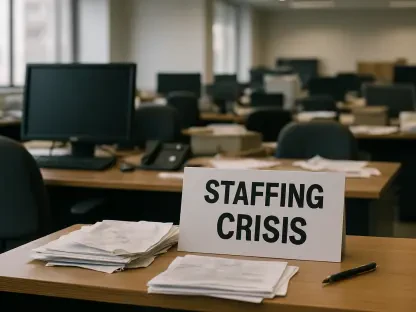The UK aerospace sector stands at a pivotal moment with the announcement of a groundbreaking partnership between a major union and an innovative aircraft developer, aiming to create 4,000 new jobs. This collaboration, unveiled on November 14, promises to establish a significant industrial hub in central Ayrshire, focusing on the development of next-generation light jets. With potential ties to iconic teams like the Red Arrows, this initiative has sparked widespread interest among industry experts, HR professionals, and community leaders. This roundup gathers diverse opinions and tips from various sources to explore the challenges, opportunities, and broader implications of such a large-scale recruitment drive in a high-skill industry. The goal is to provide a comprehensive view of how strategic planning and community-focused efforts can shape the future of aerospace employment.
Exploring the Significance of the Collaboration
This alliance represents a major boost for economic growth in the UK, particularly through the creation of highly skilled positions in engineering, manufacturing, and specialist support roles. Industry observers note that the establishment of a central hub in Ayrshire could serve as a catalyst for regional development, drawing talent from across the nation. The scale of the project—aiming to hire thousands in a specialized sector—has led to discussions about how such initiatives can redefine industrial landscapes while addressing unemployment in targeted areas.
Beyond immediate job creation, the partnership highlights a unique synergy between union advocacy and corporate innovation. Commentators from the aerospace sector emphasize that this collaboration could set a precedent for how labor organizations and private enterprises work together to prioritize both profit and social good. The focus on next-generation technology also positions the UK as a potential leader in sustainable aviation solutions, sparking curiosity about the long-term impact on global markets.
Challenges in Scaling Recruitment to Thousands
Defining Roles and Skills for Operational Success
Hiring at such a massive scale demands meticulous planning, according to recruitment specialists. One key insight is the necessity of clearly defining roles and required skills well in advance to avoid operational bottlenecks. Experts stress that without a structured approach to talent mapping, companies risk mismatches between candidates and job demands, particularly in a technical field like aerospace where precision is paramount.
Another perspective focuses on the importance of creating repeatable hiring processes to manage the sheer volume of applicants. Industry professionals suggest that standardized frameworks can help streamline operations, ensuring that each stage of recruitment—from sourcing to onboarding—is efficient. This approach minimizes the chaos often associated with rapid expansion while maintaining a focus on quality hires.
A contrasting view warns against over-reliance on rigid systems, arguing that flexibility must be built into planning to accommodate unforeseen challenges. Some recruitment leaders advocate for adaptive strategies that allow for real-time adjustments, especially when dealing with niche roles that may require specialized outreach. This balance between structure and adaptability is seen as critical to meeting ambitious hiring targets.
Balancing Speed with High Standards
The urgency to fill thousands of positions often clashes with the need to maintain rigorous hiring standards, a concern echoed across HR circles. Many professionals highlight that speed should not compromise safety or fairness, especially in an industry where errors can have significant consequences. Structured interviews and unbiased screening tools are frequently recommended as methods to uphold integrity under tight deadlines.
Automation of administrative tasks also emerges as a popular tip to manage time constraints without sacrificing quality. Some HR experts point out that digital tools can handle repetitive processes like resume filtering, freeing up human resources for more nuanced evaluations. However, there is a cautionary note that over-automation might alienate candidates if personal engagement is reduced too drastically.
A differing opinion emphasizes the cultural aspect of rapid hiring, suggesting that companies must prioritize inclusivity to reflect the diverse communities they serve. Advocates for equitable practices argue that embedding diversity into recruitment strategies not only meets ethical standards but also enhances innovation by bringing varied perspectives to the table. This viewpoint underscores the need for deliberate efforts to avoid shortcuts that could undermine long-term workforce cohesion.
Community Impact Through Thoughtful Hiring
The ripple effects of large-scale job creation extend far beyond individual hires, with many community development experts weighing in on the potential benefits. A common observation is that strategic recruitment can invigorate local economies by providing sustainable career pathways, particularly in regions like Ayrshire that may have faced economic challenges. This initiative is seen as a chance to build lasting prosperity through targeted employment.
Another angle focuses on the role of training programs in amplifying community benefits. Several industry voices suggest that partnerships between employers and unions can facilitate upskilling initiatives, ensuring that local talent is equipped for high-skill roles. Such efforts are viewed as a way to bridge gaps between current workforce capabilities and future industry needs, fostering resilience in the labor market.
There is also a call to rethink the narrative around mass hiring as merely a numbers game. Some thought leaders propose that these projects offer a unique opportunity to integrate social value into corporate strategies, prioritizing long-term growth over short-term gains. By investing in local infrastructure and education alongside recruitment, companies can create a legacy of positive impact that outlasts the initial hiring wave.
HR’s Role in Fostering Diversity and Fairness
HR professionals are often positioned as the gatekeepers of fairness in large-scale hiring, a sentiment shared by many in the field. A key tip is to implement expert-validated screening processes tailored to the specific demands of aerospace roles, ensuring that candidates are assessed on relevant competencies. This method is seen as essential to prevent bias and maintain credibility in recruitment outcomes.
Comparatively, some HR leaders draw parallels with other industries, suggesting that lessons learned from this project could influence broader workforce trends. There is speculation that structured HR practices in high-stakes sectors might inspire similar rigor in less technical fields, promoting a culture of accountability. This cross-sector learning potential is viewed as a significant byproduct of the current initiative.
An additional insight focuses on historical recruitment pitfalls, with experts urging a departure from past mistakes where diversity was often sidelined. By embedding inclusivity into every stage of the hiring process, from outreach to final selection, HR can set a new benchmark for specialized industries. This proactive stance is believed to not only enhance company reputation but also build a more robust and innovative workforce.
Key Takeaways for Large-Scale Hiring Projects
Several actionable lessons emerge from the varied perspectives on this ambitious recruitment drive. A recurring theme is the critical need for strategic talent planning, ensuring that roles are well-defined and processes are scalable. Many experts also advocate for a delicate balance between speed and quality, recommending tools like automation to ease administrative burdens while preserving thorough vetting.
Collaboration with local communities is another widely endorsed strategy, with suggestions to involve regional stakeholders in shaping training and hiring frameworks. Embedding inclusivity into every facet of recruitment is also highlighted as a non-negotiable priority, setting the stage for equitable growth. These insights collectively offer a roadmap for replicating success in other high-skill sectors facing similar scaling challenges.
Reflecting on a Milestone in Aerospace Employment
Looking back, the partnership between the union and the aircraft developer marked a significant chapter in the UK aerospace narrative, bringing together diverse viewpoints on how to tackle large-scale recruitment. The discussions captured a shared commitment to strategic planning, quality hiring, and community upliftment. For those inspired by this initiative, the next steps involve exploring how to adapt these lessons to other industries, leveraging partnerships to drive innovation. Continued dialogue among stakeholders is encouraged to refine hiring practices, ensuring that future projects build on this foundation with even greater impact.









